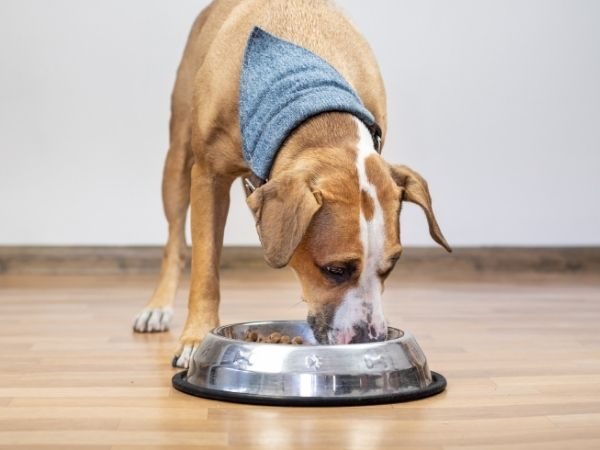We know that it’s important to keep our dogs from becoming overweight, but is there an “average” dog weight?
First things first, there isn’t really an average weight, as it is highly dependent on the breed. An average Chihuahua is nothing like an average Golden Retriever! Most people use the internet to look up figures and don’t realize it won’t work for every dog.
The size and the breed of your dog matter. Understanding the average weight of your pet is not as simple as just looking at some figures.
Average Dog Weight: What to know?
When it comes to understanding the ideal weight for your pooch, consider keeping the following in mind:
– The age of your dog,
– The breed,
– And the gender.
Typically, the male dogs are built heavier than the female ones. What’s more, if you have a mixed breed, you may find that the right weight for your pet isn’t that easy to find.
The use of the Body Condition Scoring System (BCS) from the American Animal Hospital Association is one of the best ways to track your dog’s weight based on their body condition. Veterinarians use the BCS to figure out when dogs and cats are under, over, or at an ideal weight.
The BCS scale is a nine-point scale, which helps the vets to understand and assess your dog’s body condition, as well as weight. Furthermore, the scale can help you to maintain your dog’s ideal weight by using the BCS to see if they have put on a few extra pounds. Your dog should be around a 4 or 5 ideally.
What does “average” mean anyway?
Average weight is a definition that does not fit every dog. From the sex of your dog to the height of the dog to your dog’s activity levels, there’s a lot to consider. Primarily, the height, sex, and breed of the dog are enough to understand what the “average” weight of your dog should be like.
Additionally, another factor to consider is if your dog has been neutered or spayed.
When you look up the average weight of your pets or the specific breed, remember that these figures don’t account for everything.
How to determine your dog’s healthy weight
You should be concerned about your dog’s health. It is imperative that your dog should maintain a healthy weight, as being overweight increases their risk of arthritis and other serious diseases. Being overweight is one of the biggest risk factors when it comes to canine arthritis!
Maintaining a balanced diet is one of the best ways to help your dog to keep its weight in check.
How to help your dog maintain a healthy weight
Most pet parents find it difficult to maintain their dog’s weight. Wondering how you can manage your dog’s weight? Here are some tips:
 1. Food in Moderation: First things first, remember to practice moderation. Dogs, like any being, tend to eat whatever they find. If you love pampering your dog, keep in mind that you don’t have to overfeed them.
1. Food in Moderation: First things first, remember to practice moderation. Dogs, like any being, tend to eat whatever they find. If you love pampering your dog, keep in mind that you don’t have to overfeed them.
2. Know what to feed: If you don’t know how much food is just right for your dog, talk to your vet about what is best for your pet! Vets can help you chart out the complete list of things to feed your dog.
What’s more, your vet can also help you understand exactly what to feed, and how often your dog should be eating. As your vet knows your dog’s health the best, we always recommend starting there! As our pets age, their nutritional needs change, and your vet can help you choose the right diet to best support their overall health. Your vet will also be able to guide you around what foods to avoid!
3. Pay attention to their body: When you’re concerned about your dog being overweight, pay attention to their body shape. A malnourished dog would have weaker muscles and you’d be able to see their rib cage prominently. However, a dog that is overweight would have more trouble walking, may pant more often, and may become lazy, with visible fat on the body. The extra weight will also increase pressure on their joints, contributing to them not wanting to move around as much.
4. Exercise is really important: You should try to keep your dog fit. One of the biggest mistakes while taking care of your pet is that you don’t take them out for exercise. Even if you have a small dog, exercising is important. Regular, low-impact exercise, such as walks or hydrotherapy, helps your dog’s joints stay healthy, helps keep extra weight off, and will make your dog happier overall!
If your dog’s belly is swinging or you can’t feel your dog’s ribs, then your dog needs a bit more exercise.
5. Behavior: Sometimes, it is not easy to tell that your dog is on the way to being overweight. If you see changes in your dog’s behavior, like your pet just being a couch potato or having trouble walking, those could be early signs that your dog is in pain or uncomfortable.
Always consult with your vet, especially when you notice your dog acting differently than normal. Try incorporating regular, low-impact exercise to keep their joints healthy and help maintain an ideal weight. Keep your dog’s diet healthy and remember not to go overboard with treats. Treats should only make up about 10% of your dog’s overall daily caloric intake, and whenever possible, use low-calorie treats such as blueberries, green beans, or canned pumpkin instead of high-calorie treats like peanut butter or cheese.

